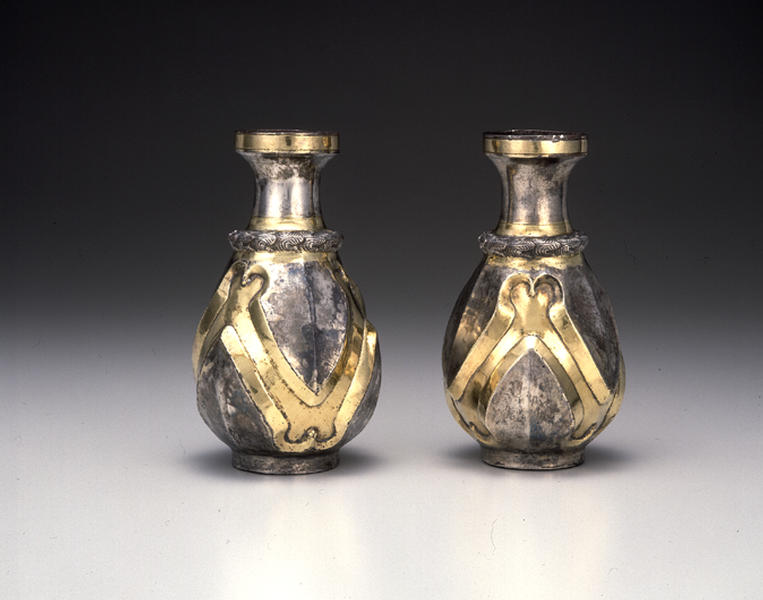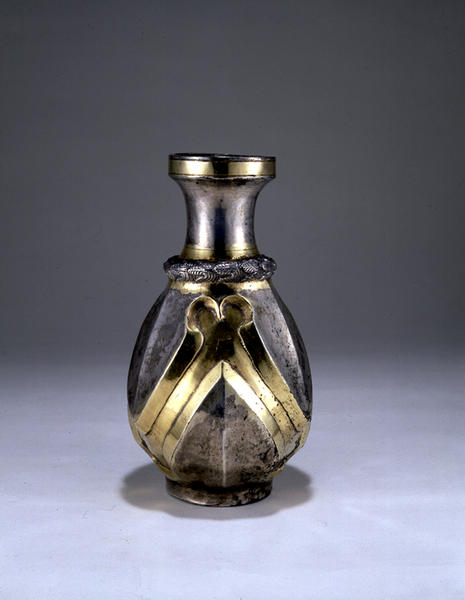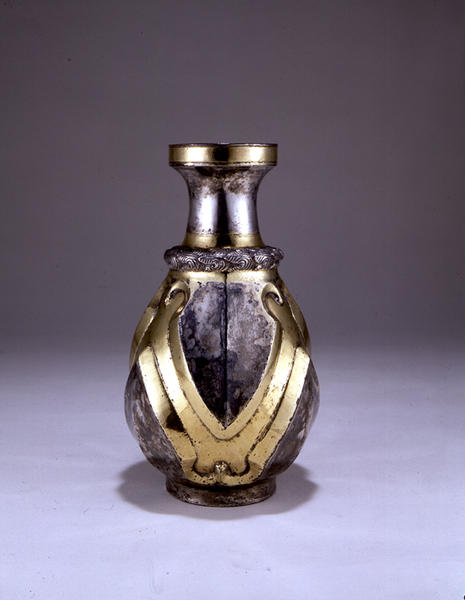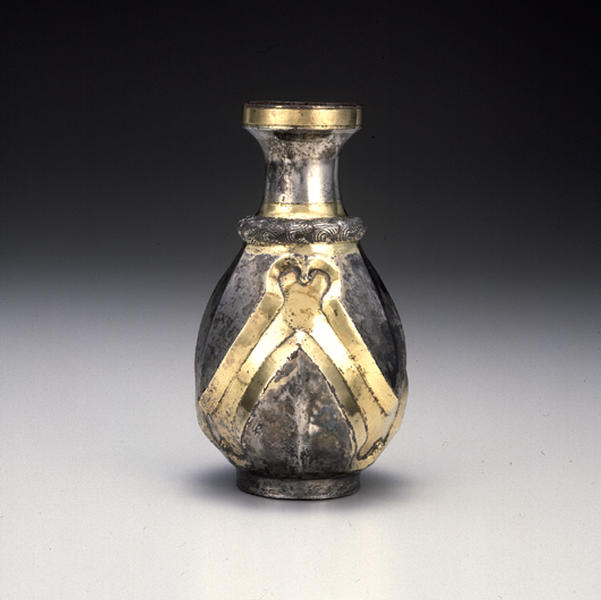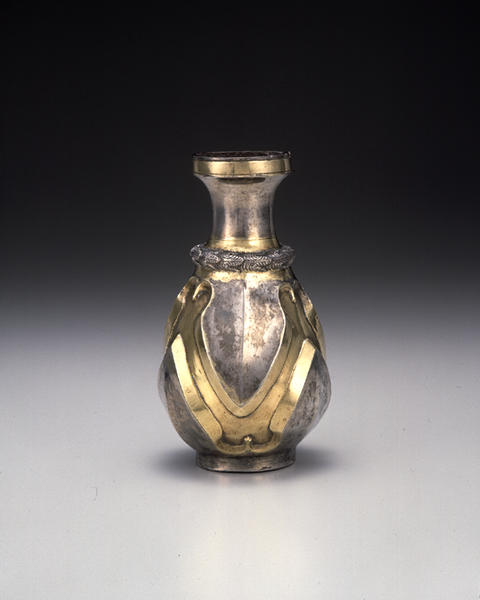三葉文瓶(一対)
- イラン
- ササン朝ペルシャ
- 6-7c
- 鍍金銀
- H-17.2
解説(開館1周年記念展)
この1対の瓶は,低い円筒形の脚にのった洋梨形の胴に,おのおの中央に稜線の通った三葉文が2列上下に組み合わせて配され,やや窄まった肩の部分には葡萄葉状の植物文で構成された立体的な帯意匠が巡る。その上につづく短い頚の上部は広がり,上下に2本単純な溝を切った低い円筒形の口が造りだされている。口,肩の周囲および上下の三葉文の間を分ける広い溝に鍍金を施している。
洋梨形の胴と短い頚そして円筒状の口をもった瓶はササン朝銀器に多く見られるものである。おそらくこれは初期ビザンチン・ローマの頚の短い瓶の影響を受けたものと想像される。このローマの瓶にはササン朝の瓶に多く見られる大きなビーズ状の意匠や,葡萄葉状の帯意匠に相当する三葉つぎ帯が窄まった頚の周りに立体的に巡らされ,低い円筒状の口がその上に付けられているものも見られる。*1
この大きく拡大された三葉文を施した銀器の類例はニューヨーク・メトロポリタン美術館およびワシントン・フリアーギャラリーの2例が知られている。*2 一説に,この三葉文の先端の尖った意匠は,後に初期イスラムの尖端の顕著な様式につながっていったとも考えられている。*3
1 J. P. C. Kent and K. S. Painter/Wealth of the Roman World/London 1977 no.193
2 The Metropolitan Museum of Art, New York Inv. 62.78.2; Freer Gallery of Art Acc.64.3
3 Ann C. Gunter and Paul Jett/Ancient Iranian Metalwork in the Arthur M. Sackler Gallery and the Freer Gallery of Art/Washington, D. C. 1992 no.32; ref. Baltimore, Walters Art Gallery, 54.457
Catalogue Entry
This pair of carafes have low cylindrical feet and pear-shaped bodies, on which combinations of two rows of a trefoil pattern are placed one on top of another with the ridgelines in the center. A band protruding from the narrowed shoulders bear a plant design, probably a grape leaf motif. The upper part of the short neck that extends from the shoulder expands as it moves upward. On top, a low cylindrical mouth has two plain channels cut into the lip horizontally. Gilding is found on the mouth, around the shoulders, and on the broad channel that separates two trefoil.
Carafes of this type a pear-shaped body, a short neck, and a cylindrical mouth are quite prevalent in Sasanian silverware, due probably to an influence from the short neck carafes of early Byzantine Rome. Of interest here is that Roman carafes are adorned with beadwork, also common in Sasanian carafes, and trefoil patterns encircle the narrow necks three-dimensionally, which are equivalent to the grape leaves of many Sasanian carafes. Some Roman carafes have low cylindrical mouths.*1
Two works that are similar to this pair of carafes, with the trefoil pattern enlarged considerably, are known. One is in the Metropolitan Museum of Art, and the other at the Freer Galley of Art in Washington, D.C.*2 Some have hypothesized that this rather sharp angle of trefoil would later lead to the remarkable style of cusps in early Islamic art.*3
